15 Ng. 100 Đ. Nguyễn Xiển, Thanh Xuân Nam, Thanh Xuân, Hà Nội 100000
Imagine stepping back in time to an era when powerful monasteries governed vast lands, their abbots wielding influence that spanned empires. Picture a fortress-like monastic complex, its walls painted with distinctive stripes of red, white, and grey, housing an unparalleled treasure trove of ancient scriptures, sacred art, and a legacy that shaped the very destiny of Tibet. This is Sakya Monastery (Sakyapa), the spiritual and historical heart of the Sakya school of Tibetan Buddhism, and once the de facto capital of Tibet during the Yuan Dynasty (13th-14th centuries). Located in the remote Shigatse region, Sakya is not just a monastery; it's a living museum, a formidable fortress, and a profound testament to a powerful monastic empire that blended spiritual authority with political might. For those who seek to unravel the intricate tapestry of Tibet's past, understand its diverse Buddhist traditions, and witness unparalleled cultural relics, a journey to Sakya is an essential and deeply enriching experience, far removed from the more commonly trodden paths.
Sakya's unique place in Tibetan history is defined by its rise to prominence not just as a religious center, but as a political powerhouse that governed Tibet for over a century.
The Sakya school is one of the four main schools of Tibetan Buddhism (alongside Nyingma, Kagyu, and Gelug). Founded in 1073 by Khön Könchok Gyelpo, it is distinguished by:
Hereditary Lineage: The leadership of the Sakya school is primarily hereditary, passed down through the Khön family.
"Path and Result" (Lamdre) Teachings: Its core teachings focus on a complex system called Lamdre, emphasizing the inseparability of the path to enlightenment and the enlightened result.
Scholarly Rigor: The Sakyapas are renowned for their profound scholarship, logical debate, and extensive preservation of Buddhist texts.
The monastery's distinctive architecture, with its striped walls (representing Manjushri, Avalokiteshvara, and Vajrapani – wisdom, compassion, and power), makes it instantly recognizable and symbolizes its unique identity.
The pivotal moment in Sakya's history came in the 13th century when Sakya Pandita (1182–1251), the fourth Sakya Trizin (throne holder), formed a crucial relationship with Godan Khan, a grandson of Genghis Khan. Later, Sakya Pandita's nephew, Chögyal Phagpa (1235–1280), established an even closer relationship with Kublai Khan, the founder of the Yuan Dynasty.
Priest-Patron Relationship: Phagpa developed the "priest-patron" relationship with Kublai Khan, where the Sakya lamas provided spiritual guidance to the Mongol emperors, and in return, the Mongols granted political authority over Tibet to the Sakya school.
De Facto Rulers of Tibet: For over a century (roughly 1260-1354), the Sakya Lhamo Phodrang (Palace) in Sakya became the de facto capital of Tibet, exercising political, religious, and administrative control over the entire region under Mongol patronage. This era was crucial for shaping Tibet's political structure and its relationship with China.
Cultural Exchange: This period also saw significant cultural exchange, with Tibetan Buddhism gaining influence in the Mongol court and Mongol patronage supporting the construction and expansion of monasteries like Sakya.
Beyond its political history, Sakya Monastery is globally significant for its unparalleled collection of Buddhist scriptures and ancient art.
The Great Library: Its "great library" is legendary, reportedly containing tens of thousands of volumes of sutras, tantras, and commentaries. Many of these are ancient manuscripts, some written in gold ink, spanning centuries of Buddhist scholarship. Some believe there are undiscovered texts still within its sealed walls.
Artistic Treasures: The monastery houses an extraordinary collection of murals, thangkas (religious scrolls), statues, and other artifacts, some dating back to the Yuan Dynasty, showcasing a unique blend of Tibetan, Chinese, and even Nepalese artistic influences from its heyday.
Sakya's legacy is thus a fascinating blend of profound scholarship, political pragmatism, and artistic brilliance, making it an indispensable stop for anyone truly wanting to understand Tibet's intricate past.
Visiting Sakya is like stepping into a living historical document. The imposing architecture, the ancient treasures, and the palpable sense of history make it a truly immersive experience.
The Sakya complex is divided into two distinct parts, reflecting different periods of its history:
North Monastery (Northern Lhakhang): This older section, located on the northern hillside, was the original monastery founded in 1073. While much of it is in ruins today due to historical events and natural decay, its remnants offer a glimpse into the monastery's initial scale and strategic defensive position.
South Monastery (Southern Lhakhang): This is the main, active part of the monastery today, a massive, fortress-like structure built on the valley floor in 1268 by Sakya Phagpa. Its formidable walls, reaching up to 16 meters high, make it one of the largest and most impressive monastic complexes in Tibet. The three distinctive striped bands – grey, white, and red – are immediately striking, symbolizing Manjushri (wisdom), Avalokiteshvara (compassion), and Vajrapani (power), respectively.
The Lhakang Chempo is the most significant hall in the South Monastery and one of the most impressive monastic halls in Tibet.
Gigantic Pillars: It is supported by massive wooden pillars, including four colossal ones reportedly gifted by Kublai Khan. These pillars are so large they are believed to have been transported from distant forests with the help of elephants.
Ancient Murals: The walls are adorned with ancient murals, some dating back to the 13th and 14th centuries, depicting various deities, mandalas, and scenes from Buddhist mythology. Their historical and artistic value is immense.
Central Altar: The hall houses numerous ancient statues of Buddhas, bodhisattvas, and Sakya patriarchs, many of gilded bronze.
This is arguably the most famous feature of Sakya Monastery.
Tens of Thousands of Texts: Housed within a massive 60-meter-long, 10-meter-high wall of shelves, this library is said to contain an astonishing collection of 84,000 ancient texts, including sutras, tantras, and commentaries. Many are handwritten manuscripts, some adorned with gold, silver, and precious stones.
Uncatalogued Wonders: It's believed that many texts remain uncatalogued and potentially undiscovered, protected within the sealed sections of the library.
Scholarly Significance: This collection represents an unparalleled repository of Buddhist knowledge, making Sakya a crucial center for Tibetan Buddhist scholarship throughout history. Access to the main library is often restricted, but guides can usually arrange a viewing of some sections.
The South Monastery complex includes numerous other chapels, ritual halls, and residential quarters for monks, each with its own unique collection of sacred art, statues, and historical artifacts. Exploring these smaller halls reveals the intricate layers of Sakya's spiritual and artistic heritage.
Beyond its religious function, Sakya's fortress-like design speaks volumes about its political and military past. The thick, high walls, watchtowers, and strategic placement reflect an era when monasteries needed to defend themselves and their vast holdings. This blend of spiritual sanctuary and formidable stronghold is unique to Sakya.
The small town of Sakya around the monastery is a quiet place, primarily serving the monastic community and a small number of visitors. It offers a glimpse into local Tibetan life, often simpler and more traditional than in larger cities like Lhasa or Shigatse.
While not directly on the main overland route to Mount Kailash, Sakya is a highly recommended and relatively accessible detour for travelers keen to explore Tibet's deeper cultural and historical narratives.
Sakya is located about 130-150 km southwest of Shigatse, making it a feasible day trip or an overnight stop from Tibet's second-largest city.
Road Conditions: The road to Sakya is generally in good condition, allowing for a comfortable journey by private vehicle.
From Everest Base Camp (EBC): Some itineraries traveling from EBC back towards Shigatse or Lhasa might incorporate a stop in Sakya, adding a rich historical layer to the journey through the Himalayas.
A visit to Sakya offers a break from the often long drives and provides a concentrated dose of Tibetan history, art, and intellectual tradition.
Contrast with Other Monasteries: Sakya offers a different perspective from other major monasteries like Tashilhunpo in Shigatse or those in Lhasa. Its political history and unique scholarly tradition provide crucial context for understanding Tibet's complex past.
Unparalleled Treasures: The sheer volume and age of the artifacts and scriptures housed in Sakya are unmatched in many other places, making it a pilgrimage for historians and art enthusiasts alike.
For anyone truly wanting to delve beyond the surface of Tibet's popular attractions, incorporating Sakya into their itinerary is highly recommended. It provides a deeper understanding of the interplay between religion and politics that shaped Tibetan civilization.
Like much of Tibet, Sakya is at a high altitude and requires careful acclimatization. The local culture is deeply intertwined with the monastery.
Sakya is situated at an elevation of approximately 4,300 meters (14,100 feet).
Higher than Lhasa: It's significantly higher than Lhasa (3,650m) but generally lower than EBC (5,200m) or the Dolma La Pass (5,630m) on the Kailash Kora.
Crucial Acclimatization: Travelers arriving from lower altitudes should have spent sufficient time acclimatizing in Lhasa and Shigatse. A day in Sakya before moving to even higher regions is beneficial.
Symptoms Awareness: Maintain vigilance for symptoms of Acute Mountain Sickness (AMS). Drink plenty of water, move slowly, and inform your guide of any discomfort.
Food options in Sakya town are basic, primarily catering to pilgrims and locals.
Noodle Soups (Thukpa): A ubiquitous and comforting dish, often with yak meat or vegetables.
Tsampa (Roasted Barley Flour): The traditional Tibetan staple, often served with yak butter tea.
Momos (Dumplings): Steamed or fried dumplings with various fillings.
Yak Butter Tea: Essential for hydration and warmth in the high-altitude climate.
Sweet Tea: A popular, less traditional alternative.
These simple, hearty meals provide the energy needed for exploring the monastery and adapting to the altitude.
Visiting a place as sacred and historically significant as Sakya requires respectful conduct:
Dress Modestly: Cover shoulders and knees, especially when entering temples.
Remove Shoes: Take off your shoes before entering main prayer halls.
Circumambulation (Kora): If you walk around the monastery (often clockwise), do so respectfully.
Photography: Ask for permission before photographing monks or locals. Inside temples, photography is often restricted or requires a fee.
Offerings: Small monetary offerings (donations) at altars are appreciated.
A journey to Sakya Monastery, a hidden gem of Tibetan history and culture, requires careful planning and expert logistical support. Due to the permit requirements for foreigners in Tibet and the remote nature of the region, an organized tour with a licensed and experienced operator like Golden Trail Travel is absolutely essential.
Unmatched Permit Expertise: Golden Trail Travel specializes in navigating the complex and ever-changing permit system for Tibet. They expertly handle the Tibet Travel Permit (TTP) and any additional permits required for specific regions like Sakya, ensuring a smooth and worry-free entry into and travel within Tibet.
Tailored Cultural & Historical Immersion: Golden Trail Travel crafts itineraries that prioritize deep cultural and historical understanding. They recognize Sakya's unique significance and ensure your visit is guided by knowledgeable local experts who bring its ancient stories, art, and spiritual traditions to life.
Seamless Logistics & Comfort: From securing flights/trains to Tibet, providing comfortable and reliable private vehicles for the overland journey to Sakya, and arranging the best available guesthouse accommodations (even in remote areas), Golden Trail Travel manages every detail. This allows you to focus entirely on the immersive experience without logistical concerns.
Expert Local Tibetan Guides: Your journey will be led by licensed, English-speaking Tibetan guides who possess profound insights into the history, religion, and daily life of Tibet. Their local knowledge enriches your experience in Sakya, providing context for its treasures and facilitating respectful interactions.
Prioritizing Health & Acclimatization: Golden Trail Travel meticulously plans itineraries to include crucial acclimatization days in Lhasa and Shigatse before ascending to Sakya's altitude. Guides are well-versed in managing AMS symptoms and ensuring your well-being throughout the high-altitude journey.
Dedicated 24/7 Support & Peace of Mind: With an unwavering commitment to traveler safety and round-the-clock support, Golden Trail Travel provides complete peace of mind throughout your journey to Tibet's remote corners.
It is crucial to understand that independent travel to Tibet is strictly forbidden for foreigners. You must:
Obtain a Tibet Travel Permit (TTP).
Travel with a licensed tour guide throughout your journey.
Travel in a private vehicle arranged by a licensed tour agency for all routes outside Lhasa.
Have a pre-arranged and approved itinerary.
Golden Trail Travel expertly manages all these complex requirements, transforming your dream of exploring Sakya and the wonders of Tibet into a seamless and safe reality.
Option 1: Classic Tibet Cultural Tour with Sakya (8-10 Days) This itinerary combines the major highlights of Central Tibet with a significant historical detour to Sakya, perfect for those interested in deeper cultural and historical insights.
Day 1-3: Lhasa Acclimatization & Exploration.
Arrive Lhasa. Explore Potala Palace, Jokhang Temple, Barkhor Street, Drepung & Sera Monasteries.
Day 4: Lhasa to Gyantse & Shigatse.
Drive to Gyantse (Yamdrok Lake, Pelkor Chode Monastery & Kumbum Stupa).
Continue to Shigatse (Tashilhunpo Monastery). Overnight in Shigatse for acclimatization.
Day 5: Shigatse to Sakya Monastery & Return to Shigatse.
Morning: Drive to Sakya (approx. 2-3 hours drive each way).
Full day exploring Sakya Monastery: South Monastery (Lhakang Chempo, library, chapels) and glimpse of North Monastery ruins. Learn about its unique history.
Late afternoon: Drive back to Shigatse for another night of rest.
Day 6-7: Shigatse to Rongbuk Monastery / Everest Base Camp (EBC).
Drive towards EBC, enjoying stunning Himalayan views. Overnight at Rongbuk Monastery guesthouse (basic, highest monastery in the world).
Witness Mount Everest at sunrise/sunset.
Day 8-10: Return to Lhasa & Departure.
Drive back from EBC towards Lhasa over two days, stopping at scenic points.
Transfer to Lhasa Gonggar Airport (LXA) for onward flight.
Option 2: Western Tibet Expedition including Kailash & Sakya (16-18 Days) For the ultimate Tibetan adventure, combining the Kailash pilgrimage with a cultural deep-dive, Sakya can be integrated into the return journey.
Days 1-15: Follow a standard Kailash Kora itinerary (as outlined in previous Darchen/Drirapuk descriptions), covering Lhasa, Shigatse, Everest Base Camp, and the full 3-day Kailash Kora (Darchen, Drirapuk, Dolma La, Zultrul Puk). You would return to Saga/Shigatse after the Kora.
Day 16: Return from Kailash Region to Sakya (or Shigatse then Sakya).
Long drive from Saga or a point closer to Kailash back towards Shigatse, with a specific detour to Sakya Monastery.
Spend a significant portion of the day exploring Sakya's historical and artistic treasures.
Overnight in Sakya (basic guesthouse) or continue to Shigatse.
Days 17-18: Return to Lhasa & Departure.
Drive from Sakya/Shigatse back to Lhasa.
Transfer to Lhasa Gonggar Airport (LXA) for onward flight.
Ready to uncover the historical and spiritual wonders of Sakya and beyond? Visit Golden Trail Travel's website to explore their curated Tibet tours and easily book your adventure: https://goldentrailtravel.com/
Sakya Monastery is a destination unlike any other in Tibet. It's a place where the echoes of a powerful monastic empire still resonate within its ancient, striped walls. More than just a spiritual center, Sakya was once the very heart of Tibetan governance, a formidable fortress of faith, scholarship, and political influence that shaped the destiny of the entire plateau.
Its unparalleled library, a treasure trove of knowledge accumulated over centuries, speaks to a profound dedication to Buddhist scholarship. The ancient murals and statues within its halls tell stories of a vibrant artistic tradition that bridged cultures. And the sheer defensive architecture reminds visitors of a turbulent era when spiritual power often required physical might.
For those drawn to the intricate history of Tibet, the interplay of religion and politics, and the discovery of rare and ancient artifacts, Sakya offers an exceptionally rewarding experience. It's a journey into the soul of a lost empire, a profound testament to a unique chapter in human history, and an essential stop for anyone seeking a deeper understanding of the Roof of the World.
Q1: Where is Sakya Monastery located? A1: Sakya Monastery is located in Sakya County, about 130-150 kilometers (80-93 miles) southwest of Shigatse city, in the Tibet Autonomous Region of China.
Q2: What is the altitude of Sakya? A2: Sakya Monastery is situated at an altitude of approximately 4,300 meters (14,100 feet) above sea level. This is higher than Lhasa but generally lower than Everest Base Camp or the Mount Kailash Kora.
Q3: Why is Sakya Monastery so important in Tibetan history? A3: Sakya Monastery was once the de facto capital of Tibet during the Yuan Dynasty (13th-14th centuries) under the patronage of the Mongol emperors, particularly Kublai Khan. Its abbots, especially Sakya Pandita and Chögyal Phagpa, wielded significant political and religious power, shaping Tibet's governance for over a century.
Q4: What is unique about Sakya Monastery's appearance? A4: Sakya Monastery is instantly recognizable by its distinctive striped walls of red, white, and grey. These colors symbolize the Bodhisattvas Manjushri (wisdom, grey/black), Avalokiteshvara (compassion, white), and Vajrapani (power, red), representing the main deities of the Sakya lineage. It also has a formidable, fortress-like structure.
Q5: What are the main highlights of visiting Sakya Monastery? A5: The main highlights include the massive South Monastery (Southern Lhakhang) with its fortress-like architecture, the grand Main Assembly Hall (Lhakang Chempo) with ancient murals and giant pillars, and the legendary Sakya Library with its immense collection of ancient Buddhist scriptures and manuscripts.
Q6: What kind of historical treasures can be found in Sakya's library? A6: Sakya's "great library" is rumored to contain over 84,000 volumes of Buddhist scriptures, tantras, and commentaries. Many are ancient, handwritten manuscripts, some adorned with gold and silver ink, making it one of the world's most significant repositories of Tibetan Buddhist texts.
Q7: Is it possible to visit Sakya Monastery as a foreigner? A7: Yes, it is possible, but like all travel in Tibet, foreigners must be part of an organized tour with a licensed guide and private vehicle, and possess a Tibet Travel Permit (TTP). Independent travel is not permitted.
Q8: How long does it take to get to Sakya from Shigatse? A8: The drive from Shigatse to Sakya typically takes approximately 2 to 3 hours each way by private vehicle, making it feasible as a day trip from Shigatse.
Q9: What about altitude sickness when visiting Sakya? A9: Sakya's altitude (4,300m) is significant. It's essential to have spent several days acclimatizing in Lhasa and Shigatse before visiting. Stay well hydrated, move slowly, and inform your guide immediately if you experience any symptoms of AMS.
Q10: What kind of food and accommodation can I expect in Sakya? A10: Food and accommodation in Sakya town are basic, primarily catering to local needs and pilgrims. Expect simple Tibetan guesthouses with shared facilities and hearty local dishes like noodle soups (thukpa) and momos.
"Sakya Monastery was absolutely mind-blowing! The scale of the place, the striped walls, and imagining it as the capital of Tibet was incredible. Our Golden Trail Travel guide brought all the history to life, explaining the Sakya school's unique role. A definite must-see for anyone interested in real Tibetan history." — Dr. Evelyn Reed, USA
"We added Sakya to our Tibet itinerary, and it was one of the best decisions. The monastery's library is legendary, and even seeing a fraction of it was awe-inspiring. Golden Trail Travel handled all our permits and the comfortable drive from Shigatse seamlessly. Their team is truly top-notch." — Professor Kenji Nakamura, Japan
"The sheer historical weight of Sakya is immense. It felt like stepping into a fortress straight out of a medieval tale, but one filled with immense spiritual treasures. Our Golden Trail Travel guide was a walking encyclopedia, making the visit deeply educational. Highly recommend this detour for serious travelers." — Liam Gallagher, Ireland
"Golden Trail Travel organized our entire Tibet tour, and our visit to Sakya was a highlight. The distinct architecture is captivating, and learning about the Sakya lamas' relationship with the Mongol emperors was fascinating. It's a testament to Tibet's rich and complex past, brought to life by a fantastic tour operator." — The Gupta Family, India
"For anyone wanting to understand the political and spiritual heart of ancient Tibet, Sakya is essential. It's less touristy and more authentic than some other places. Golden Trail Travel provided excellent support, ensuring our comfort and safety at altitude while we explored this incredible site." — Sophie Laurent, France
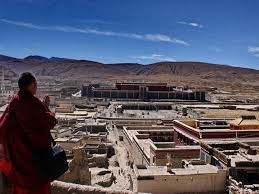

Trekking around Hanoi is the best way to discover Vietnam’s capital. What’s the best time to go trekking in Hanoi, Vietnam? Are there any treks near Hanoi? Just follow our complete guide about trekking in Hanoi with trips, advice, and reviews from our local hiking specialists.
May 28, 2025
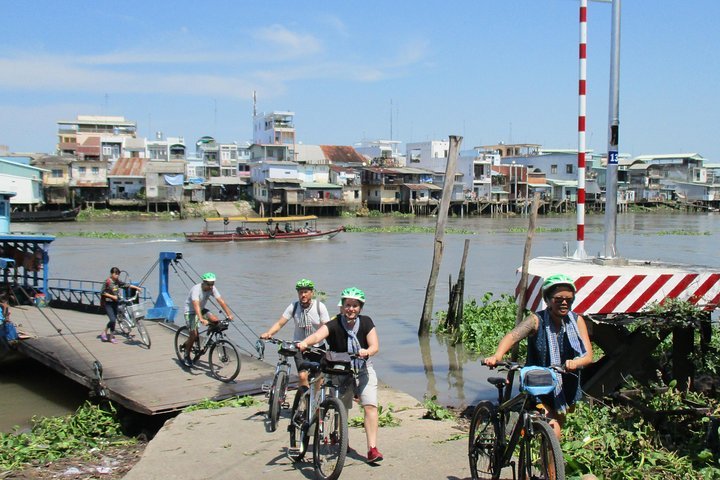
Mekong Delta Vietnam is one of Vietnam’s most popular destination for cyclists and fans of two wheels travel. The Mekong Delta region offers different cycling itineraries which can fit anyone’s needs.
May 28, 2025

Da Lat Cycling is our complete travel guide dedicated to all things Dalat bicycle travel: Da Lat bike rental, Da Lat bike tour, Da Lat rent bike, bicycle rental Da Lat, cycling in Da Lat, Da Lat mountain biking, Da Lat cycling.
May 28, 2025
.jpg)
Vietnam Central Highlands is an area of stunning natural beauty which extends from the Cat Tien National Park in the south as far as Quang Nam in the north. The region sees few foreign visitors, and many of them go to revisit old battlefields or see the indigenous tribes.
May 28, 2025

Nha Trang Cycling is our complete travel guide dedicated to all things Nha Trang bicycle travel – Nha Trang bicycle tour, cycling Nha Trang to Da Lat, countryside bike, mountain biking, bicycle rental, hire, route map.
May 28, 2025

Hoi An Cycling is our complete travel guide about Hoian bicycle travel – Hoi An cycle tours, cycling in and around Hoi An, countryside, ride Hoian to Hue, My Son, An Bang beach, Hoi An Vietnam bike, bicycle rental, route map.
May 28, 2025
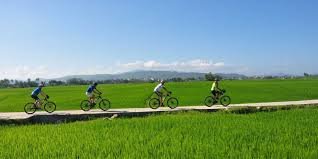
Want to cycle around Hue Vietnam? Need some advice to know where to go? What are the best bicycle routes in Hue? Looking for bike rentals in Hue? We have done the hard work for you. Keep reading to discover all about cycling in Thua Thien Hue Vietnam.
May 28, 2025
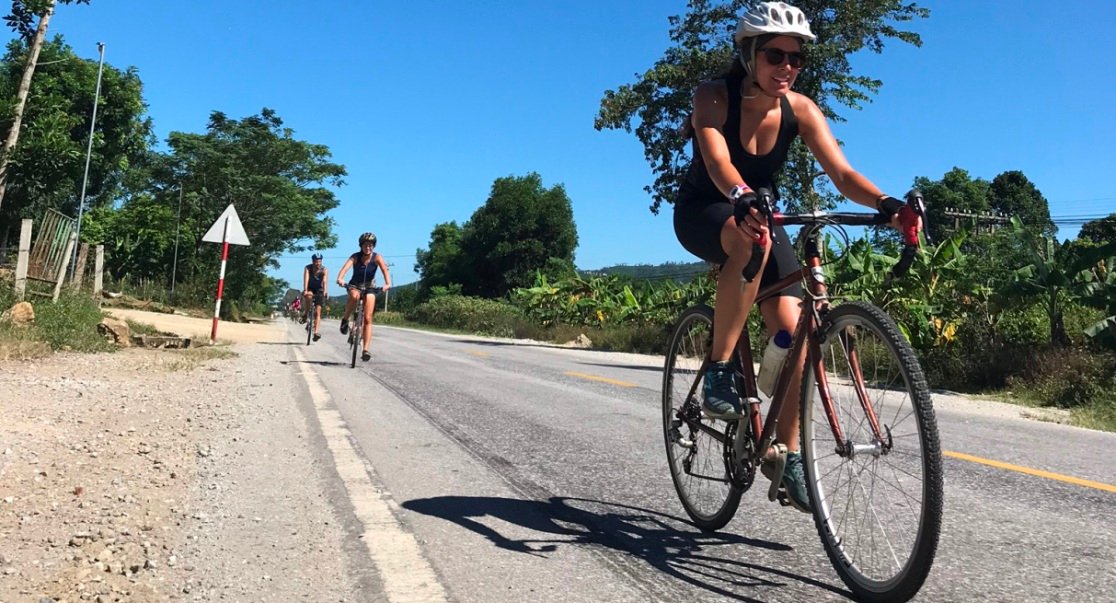
Cycling in central Vietnam offers a unique and exhilarating way to explore the stunning landscapes and cultural treasures of this beautiful region. From the bustling city of Da Nang to the peaceful countryside and charming villages, central Vietnam has something for every type of cyclist.
May 28, 2025

Cao Bang cycling is our complete travel guide dedicated to all things Cao Bang bicycle travel: Cycle Hanoi to Cao Bang, Cao Bang cycling tour, Sapa, Ha Giang to Cao Bang, mountain biking, bicycle hire, rent, rental, Cao Bang bicycle routes, Cao Bang Vietnam by bike…
May 28, 2025
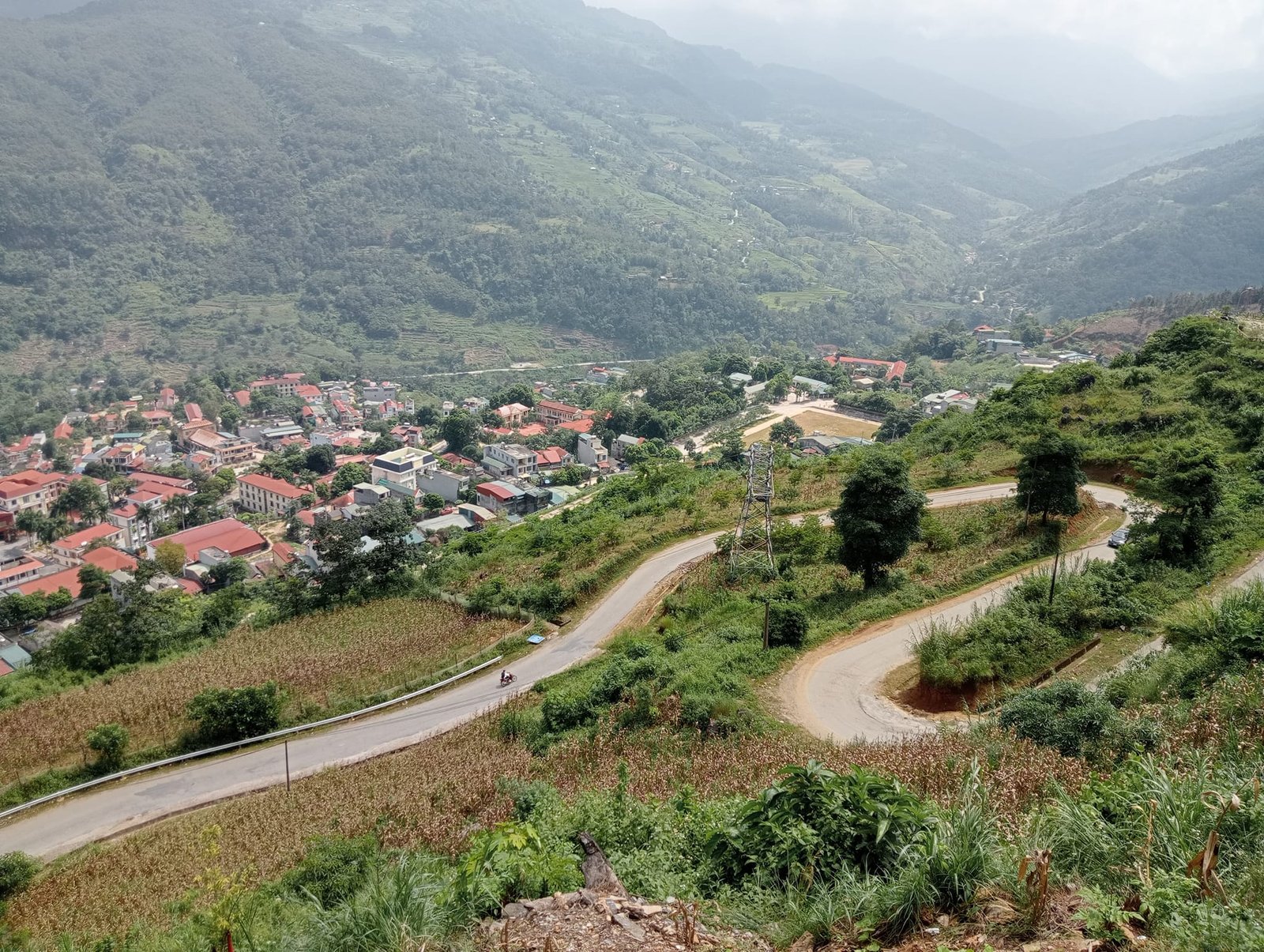
Ha Giang cycling is some of the most amazing experience in South East Asia. Every day offers a different terrain, gradient, vista and climate as you climb and descent the various altitudes of the Ha Giang Plateau.
May 28, 2025

Dien Bien cycling is our complete travel guide dedicated to all things Dien Bien bicycle travel: Cycle Hanoi to Dien Bien, Dien Bien cycling tour, Sapa to Dien Bien, mountain bike ride, bicycle hire, rent, rental, Dien Bien bike routes, Dien Bien Vietnam by bike…
May 28, 2025

Lai Chau cycling is our complete travel guide dedicated to all things Lai Chau bicycle travel: Hanoi to Lai Chau cycling, Lai Chau cycling tour, Sapa to Lai Chau, Dien Bien, mountain bike ride, bicycle hire, rent, rental, Lai Chau bike routes, Lai Chau Vietnam by bike…
May 28, 2025

Bac Ha cycling is our complete travel guide about cycling in Bac Ha Vietnam. If you search for biking around Bac Ha, cycle from Bac Ha to Lao Cai, Bac Ha bike ride, Bac Ha to Ha Giang bicycle tour, then you should keep reading. We brings on this page helpful information about Bac Ha mountain bike tour as well as related information you might need to plan your upcoming trip.
May 28, 2025
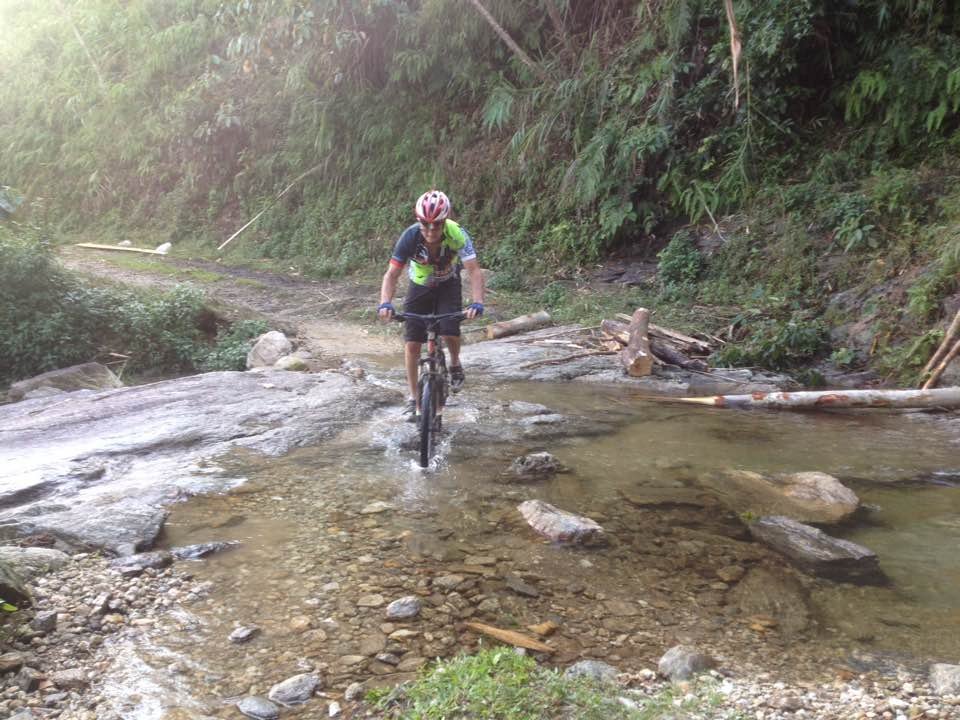
Sapa cycling is our complete Sapa travel guide dedicated to all things bicycle travel: Hanoi to Sapa cycling, Sapa cycling tour, mountain bike race, bicycle hire, rent, rental, Sapa bike routes, Sapa Vietnam by bike.
May 28, 2025

Cycling in northern Vietnam is a great way to explore the region’s stunning landscapes and rich culture. The north of Vietnam is known for its mountainous terrain, with rolling hills and rugged mountain ranges that offer plenty of challenging and scenic cycling routes.
May 28, 2025

E-bike tours in Vietnam offer an exciting and eco-friendly way to explore the country’s stunning landscapes, rich culture, and ancient history.
With the electric assistance, you can effortlessly ride through cities, rice paddies, and mountainous regions, taking in the breathtaking scenery along the way.
May 28, 2025
.jpg)
Cat Ba Island cycling is one of primary outdoor activities in Vietnam which offers the chance to explore the biggest island in Ha Long Bay – Cat Ba Island, its white sand beaches, fishermen villages, the Cat Ba national park, and the local community.
May 28, 2025

Ninh Binh cycling is our complete travel guide about cycling in Ninh Binh Vietnam. It is about practical information about cycling in Ninh Binh, bike tour, bicycle rental, bike hire, Ninh Binh cycle route, map…
May 28, 2025

Pu Luong cycling lets you discover the beautiful countryside of the northern Vietnam as well as experience rural village life from up close. Biking on the back roads, through countryside lanes, and past stunning rice terrace fields, narrow dirt tracks, hard-surface valleys and mountain passes while greeting local farmers as you pass by, all add to an immersive experience!
May 28, 2025

Mai Chau cycling lets you discover one of the most beautiful countryside village of Vietnam, as well as to experience the rich culture and tradition of the Thai ethnic group. Pedaling on the quiet back roads, through countryside lanes while greeting local farmers and school kids as you pass by, all add to an immersive experience!
May 28, 2025